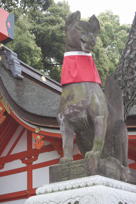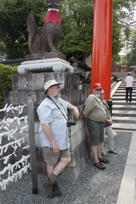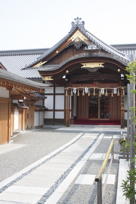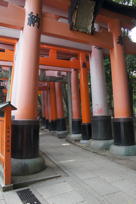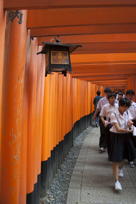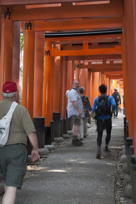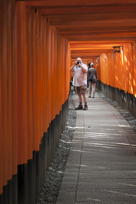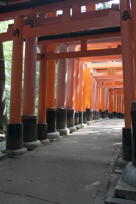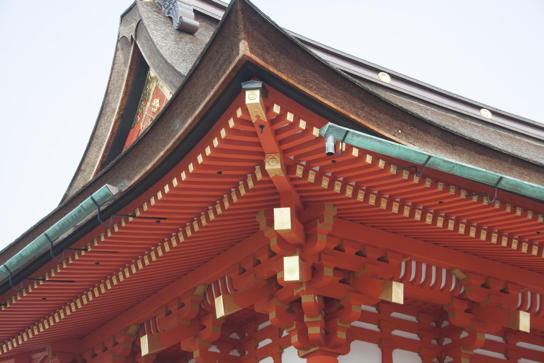
|
|
I liked this detail of the roof structure of a building within the Inari Shrine (bigger image). |
Friday, 30 May ( I ),
on the way to Nara
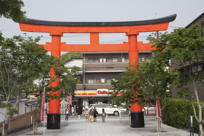
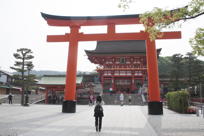
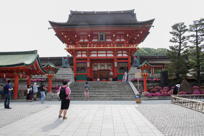
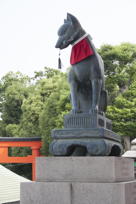
Guardian fox (big image, small).
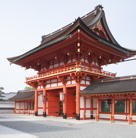
Nara! It was the town that impressed me the most when I came to Japan to visit my brother and sister-in-law, niece and nephew, in 1971. And I was eager to get back. But Mike knew of an amazing shrine just a little way south of Kyōto, that he wanted to get to. Once again, I’ve split up the day’s pictures into two parts, because of the huge number of times that I clicked the shutter of my camera. So on this page, it’s everything up to Nara, and on the next page, Nara itself.
We left our ryokan at 7:00, expecting that we would have breakfast at the Mister Donut in the Kyōto Station, but found another place that looked more likely, so ate there. We got onto an early Nara local, but got off after only the second stop, in Inari. This is the site of a shrine whose most surprising feature is a sequence, really a tunnel, of torii gates, all painted vermilion.
The shrine is not far from the train station, and we soon saw that it’s not only the torii that are in vermilion. Almost everything else is, as you’ll see in the pictures on this page. When you come in off the street, you pass through a big torii immediately. The top picture on the left is of that gate, looking out toward the street. The next picture down is of a second, equally large gate, looking towards a big building of the shrine itself, and below that an unencumbered picture of that building.
It would seem that, properly speaking, the shrine is dedicated to Inari Ōkami, maybe a tutelary spirit of foxes, fertility, rice, and many many other good things. It looks to me as if Shinto is pleasantly undefined, or maybe I should say fluid, unlike Western religion, where every religious concept wants to be precisely defined, bounded, delimited, and pinned down. Anyway, in connection with the association of Inari Ōkami with foxes, there are surprisingly many statues of foxes in this shrine. I think I took pictures of only three fox statues this day, all of them shown here, but believe me, there were more than that.
The four pictures to the left attempt to show the feel that one gets walking through this tunnel of torii. The gates themselves weren’t identical—there were individual differences in construction and size. Also some were clearly much older than others.
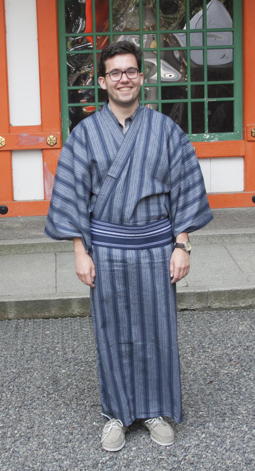
|
| And a new suit! (larger image). |
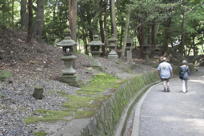
We could have stayed there, walking through yet more reaches of the vermilion tunnel, but we turned aside, since we did want to spend some time in Nara. But on our way to the train station, we passed a street-side shop selling kimono for women and men. For himself, Mason got a yukata, and for his girlfriend a very nice-looking kimono. I recall vaguely that Cindy urged Mark and me to buy yukata, but I already have a happi that my brother and sister-in-law gave me so many years ago, and rarely wear it, so was not inclined to buy.
We quickly made our way to the railway station, but had to take a local to Nara, so it was a while before our big experience of the day.
